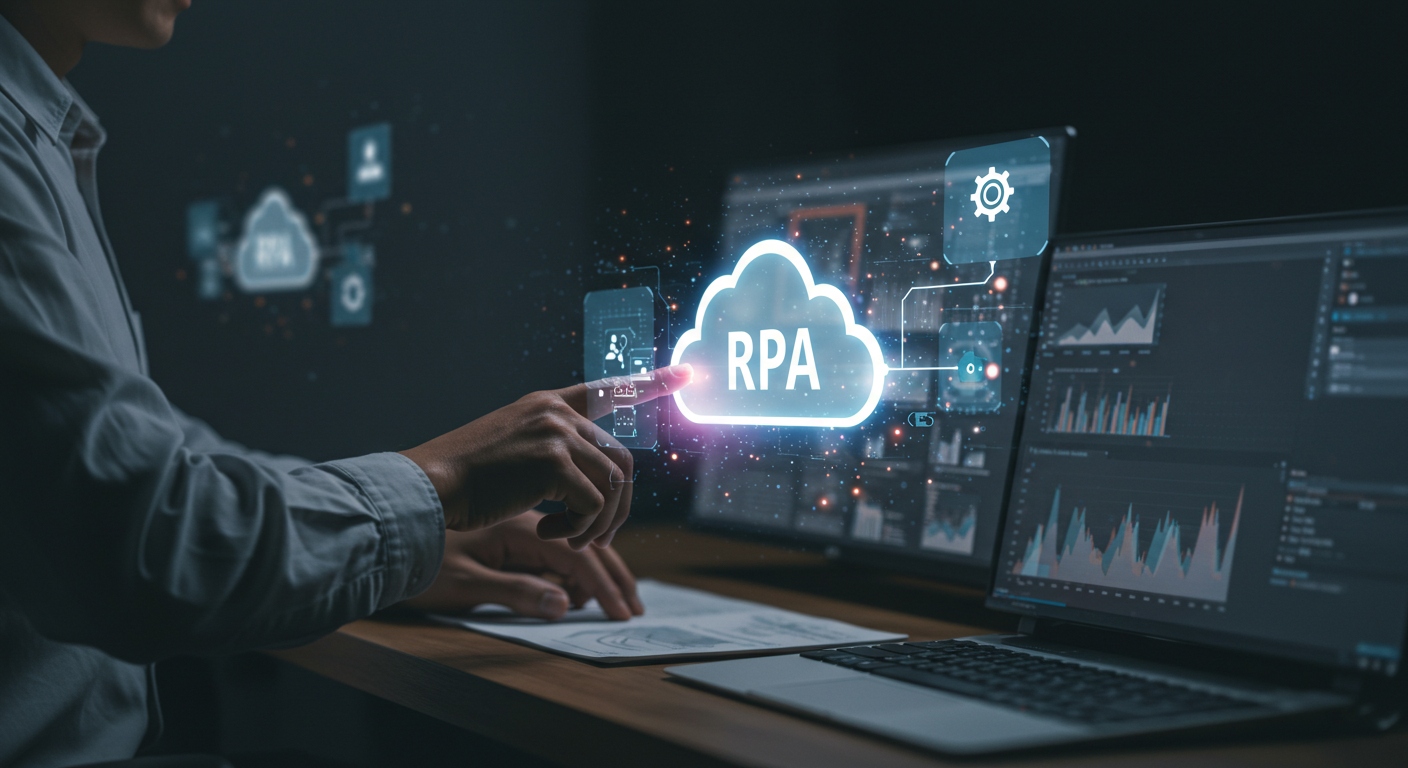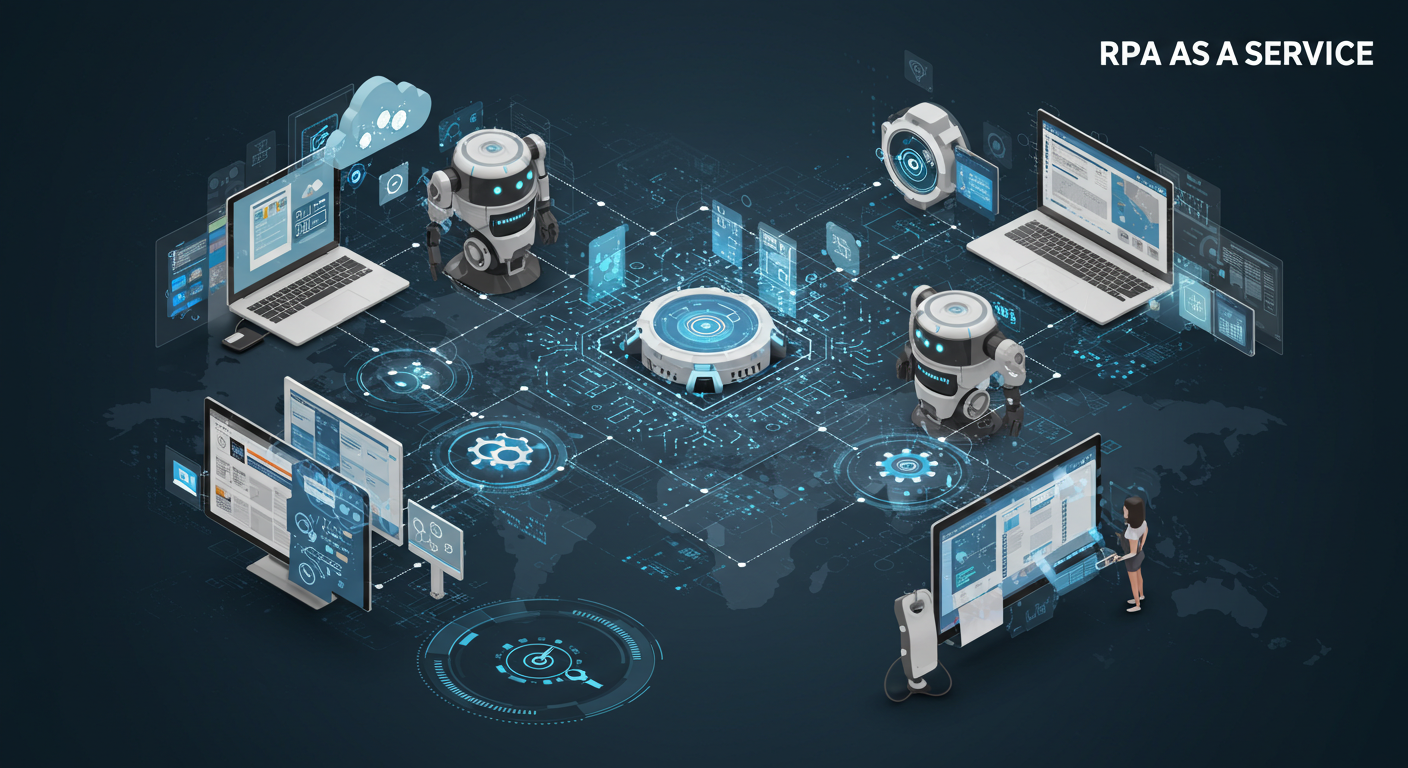A Beginner's Guide to RPA as a Service: What It Is and Why It Matters
Automation transforms businesses. Companies worldwide spend billions seeking operational efficiency. Yet traditional robotic process automation often creates barriers rather than solutions.
RPA as a service is a game-changer, completely transforming the dynamics of automation. With its cloud-based delivery models, it not only eliminates infrastructure headaches but also provides immediate access to enterprise-grade automation tools. This means that organizations can now automate processes within weeks, rather than months, ushering in a new era of digital transformation initiatives.
What Makes RPA as a Service Different
Traditional automation requires significant upfront investments. Companies purchase expensive software licenses, install complex infrastructure, and hire specialized teams. This approach works for large enterprises but excludes smaller organizations from automation benefits.
Cloud-First Architecture Advantages
RPA as a service operates entirely in cloud environments, making it incredibly simple and accessible. Service providers manage all technical infrastructure, including servers, security protocols, and software updates. Businesses can access automation capabilities through simple web interfaces, without the need to understand or worry about the underlying complexity.
Key architectural benefits include:
- Zero hardware requirements
- Automatic software updates
- Built-in security measures
- Instant scalability options
Bot deployment becomes remarkably simple. Technical teams configure automation workflows using visual designers rather than complex programming languages. This approach reduces implementation time while making automation accessible to non-technical users across different departments.
Service Integration Capabilities
Modern platforms connect with virtually any business application. Legacy systems, web-based tools, and mobile applications all integrate seamlessly with cloud-based automation solutions.
Integration extends beyond simple data transfer to include complex workflow orchestration. Bots can trigger actions across multiple systems, validate data integrity, and handle exceptions automatically. This comprehensive connectivity enables end-to-end process automation rather than isolated task optimization.
Understanding the RPA as a Service Business Model
The RPA as a service business model is a significant departure from traditional automation economics. It transforms capital expenditures into operational expenses, creating more predictable cost structures for organizations of all sizes.

Flexible Pricing Structures
Service providers offer multiple pricing options to accommodate different business needs. Usage-based models charge based on actual bot activity, ensuring costs align with business value. Subscription approaches provide budget predictability while enabling unlimited automation within defined parameters.
Common pricing models include:
- Per-bot monthly subscriptions
- Transaction-based billing
- Hybrid usage combinations
- Enterprise unlimited packages
Small businesses benefit from low entry costs. Large corporations gain from elastic scaling capabilities that adjust automatically to changing demands.
Revenue Optimization for Providers
Successful providers balance customer value with sustainable business models. They invest heavily in platform development, security infrastructure, and customer support services. Multi-tenant architectures allow efficient resource sharing while maintaining strict data isolation between clients.
The RPA as a service model creates alignment between provider success and customer outcomes. Providers succeed when customers achieve significant automation benefits, encouraging continuous platform improvement and innovation investment.
Implementation Benefits That Drive Adoption
The speed of RPA as a service is its most compelling advantage over traditional approaches. While on-premise implementations often require months of preparation, cloud solutions can be operational within days, sparking excitement for the rapid deployment capabilities of this technology.
Rapid Deployment Capabilities
Pre-configured environments eliminate most technical setup requirements. Organizations focus on process design rather than infrastructure management. This shift dramatically reduces time-to-value for automation initiatives while minimizing implementation risks.
Deployment timeline comparison:
- Traditional RPA: 3-6 months average
- RPA as a service: 2-4 weeks typical
- Pilot projects: Often same-day activation
Quick wins build momentum for larger automation programs. Success stories spread throughout organizations, creating positive feedback loops that accelerate adoption across different departments and business units.
Access to Specialized Expertise
Service providers employ teams of automation experts with deep industry experience. These professionals understand best practices, common pitfalls, and optimization techniques that would take years to develop internally. Organizations benefit from this expertise without hiring specialized staff.
Knowledge transfer occurs naturally through project collaboration. Internal teams learn automation principles while working alongside experienced consultants, building long-term capabilities that extend beyond individual projects.
Addressing Common Concerns and Challenges
Security questions often dominate RPA as a service discussions. Organizations rightfully worry about data exposure when moving critical processes to cloud environments.
Data Security and Compliance
Leading providers implement enterprise-grade security measures exceeding most internal capabilities. Multi-layered protection includes encryption, access controls, audit logging, and compliance certifications for regulated industries. Studies show that cloud-based security often surpasses on-premise solutions due to specialized expertise and resource dedication.
Compliance requirements vary by industry and geography. Healthcare organizations need HIPAA compliance. Financial services require SOX adherence. European companies must satisfy GDPR regulations. Reputable providers maintain relevant certifications and undergo regular audits.
Security features typically include:
- End-to-end data encryption
- Role-based access controls
- Real-time monitoring systems
- Automated backup procedures
Control and Customization Limitations
Standardized solutions cannot accommodate every unique requirement. Organizations with highly specific needs might find cloud offerings less flexible than custom-built alternatives. This limitation particularly affects companies with complex legacy systems or non-standard processes.
However, standardization often improves automation quality. Proven workflows reduce implementation risks while established best practices accelerate deployment timelines. Most organizations discover that standardized approaches meet their needs effectively while providing additional stability and maintainability.
Long-term Cost Considerations
Subscription costs accumulate over time. Successful automation projects running continuously for several years might eventually exceed equivalent purchase costs. Organizations must model different scenarios to understand break-even points and make informed decisions.
The total cost calculation includes factors beyond software expenses. Internal resources, infrastructure maintenance, and ongoing support services add significant costs to owned solutions that subscription models typically include.

Choosing the Right RPA as a Service Model
Provider selection significantly impacts automation success. Organizations must evaluate technical capabilities, industry expertise, and service quality metrics carefully.
Evaluation Criteria
Technical compatibility with existing systems represents the primary consideration. Providers should support current applications while offering migration paths for future technology changes. Security features must meet organizational standards and regulatory requirements.
Industry experience matters significantly. Providers with relevant sector knowledge understand unique challenges, compliance requirements, and best practices specific to particular business domains. Healthcare automation differs substantially from manufacturing or financial services requirements.
Key evaluation factors:
- Integration capabilities with current systems
- Security certifications and compliance standards
- Industry-specific experience and references
- Service level agreements and support options
- Scalability limits and performance guarantees
Service Level Expectations
Clear expectations prevent misunderstandings and ensure successful partnerships. Uptime guarantees, response times, and escalation procedures should be explicitly defined in service agreements. Regular performance reporting builds trust while identifying optimization opportunities.
Support quality varies significantly between providers. Some offer basic technical assistance while others provide comprehensive consulting services. Organizations should align support expectations with internal capabilities and project complexity.
Summary
RPA as a service represents a fundamental shift in how organizations approach automation. Cloud-based delivery eliminates traditional barriers while providing immediate access to enterprise capabilities. The model’s flexibility, rapid deployment, and expertise access make automation achievable for businesses of all sizes.
Success depends on careful provider selection and realistic expectation setting. Organizations that invest time in proper evaluation and planning typically achieve significant benefits within months of implementation. The combination of reduced costs, faster deployment, and continuous innovation creates compelling value propositions that will drive continued market growth and adoption across diverse industries and business functions.